


Maximizing Space, Minimizing Footprint
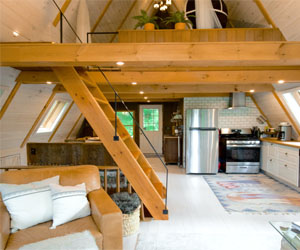
Compact living, also known as small-space living, micro-living, or minimalist living, is a contemporary housing trend that emphasizes efficient use of space. It is a response to urbanization, population growth, and the desire for a simpler, more sustainable lifestyle. In compact living, the focus is not on the size of the space but on how it's utilized, making it an innovative solution to the challenges of modern living.
One of the primary motivations for compact living is the ever-increasing urbanization and the limited availability of space in urban areas. As more people gravitate toward cities in search of better opportunities, living spaces become smaller and more expensive. Compact living offers a way to adapt to this changing landscape, allowing people to live comfortably in smaller square footage.
Key features of compact living include:
Efficient Design: Compact living requires meticulous planning and design to make the most of every square inch. Multi-functional furniture, space-saving storage solutions, and flexible layouts are essential elements. This approach maximizes the utility of a space and reduces waste.
Sustainability: Compact living often goes hand-in-hand with sustainability. Smaller living spaces consume fewer resources in construction and maintenance. Reduced energy consumption and water use contribute to a smaller environmental footprint. Many compact homes incorporate eco-friendly materials and energy-efficient systems.
Minimalism: Compact living encourages minimalism, which involves owning fewer possessions and simplifying one's life. The focus is on quality over quantity, with an emphasis on what truly adds value to one's life. This approach can lead to reduced stress, lower costs, and more freedom.
Affordability: Smaller living spaces tend to be more affordable, making homeownership more accessible to a broader range of people. Compact living allows individuals to save money and allocate their resources to other priorities, such as travel, education, or experiences.
Urban Living: Compact living is particularly suited for urban environments, where space is at a premium. It allows people to live close to work, amenities, and cultural attractions. The reduced need for long commutes also contributes to sustainability.
Community Focus: Many compact living developments incorporate shared spaces and communal areas, fostering a sense of community among residents. This promotes social interaction and a sense of belonging.
Freedom Of Mobility: Compact living often goes hand in hand with the ability to downsize and live more mobile lifestyles. Some people choose to live in tiny houses on wheels or in other portable structures, providing them with the freedom to travel or relocate as they desire.
Compact living is not without its challenges. Designing and living in a small space can require significant adjustments, both mentally and physically. Storage and organization can be more demanding, and the need for decluttering becomes essential. However, for those who embrace this lifestyle, the benefits can be substantial.
Compact living is a housing trend that offers an innovative approach to the challenges of urbanization and the desire for a more sustainable, affordable, and minimalist lifestyle. By optimizing the use of limited space, embracing minimalism, and prioritizing sustainability, compact living provides a solution that is well-suited to the evolving needs and desires of our modern world. Whether it's in the form of tiny houses, micro-apartments, or other compact living spaces, this trend is changing the way we think about our homes and the spaces we inhabit.
Balancing Rising Energy Demands
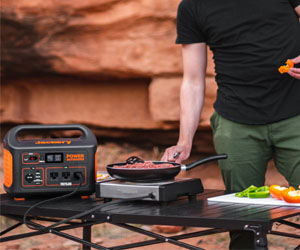 The Growing Energy Demands
The Growing Energy Demands
The primary driver of escalating energy demands is population growth and urbanization, particularly in developing nations. As more people move to urban areas and access modern amenities, energy consumption naturally increases. In parallel, the proliferation of technology, from smartphones to electric vehicles, intensifies our need for electricity. In addition, industrial processes and manufacturing depend heavily on energy-intensive operations.
Energy Sources And Environmental Impact
The conventional sources of energy, such as coal, oil, and natural gas, have been the backbone of energy production for decades. However, their use has resulted in significant environmental consequences, including air pollution, greenhouse gas emissions, and habitat destruction. As a result, there is an increasing push for cleaner, more sustainable energy sources.
The Transition To Renewable Energy
Renewable energy sources, such as solar, wind, and hydropower, are being hailed as the answer to the environmental challenges associated with conventional energy sources. These renewables offer several advantages:
Clean Energy: Renewable sources produce little to no greenhouse gas emissions, reducing the negative impact on climate change.
Abundant And Sustainable: Sunlight, wind, and flowing water are nearly infinite resources, making them sustainable over the long term.
Energy Independence: By utilizing locally available renewables, countries can reduce their dependence on energy imports and enhance their energy security.
Technological Advancements: Ongoing advancements in renewable technology are making these sources more efficient and affordable.
Cleaning Your Way To A Sustainable Future
 Non-Toxic Products: Green cleaning relies on cleaning products that are free from harmful chemicals and synthetic fragrances. These products are safer for your health and the environment.
Non-Toxic Products: Green cleaning relies on cleaning products that are free from harmful chemicals and synthetic fragrances. These products are safer for your health and the environment.
Reduced Environmental Impact: Green cleaning minimizes the use of harsh chemicals that can contaminate water systems and contribute to pollution. It also promotes the use of eco-friendly cleaning tools and practices.
Clean Indoor Air: Green cleaning products and methods focus on improving indoor air quality by avoiding the release of volatile organic compounds (VOCs) commonly found in traditional cleaning products.
Effective Green Cleaning Techniques
Natural Cleaning Solutions: Utilize natural ingredients like white vinegar, baking soda, lemon juice, and essential oils to create your cleaning solutions. For example, a mixture of vinegar and water can serve as an excellent all-purpose cleaner.
Reusable Cleaning Tools: Invest in high-quality reusable cleaning tools, such as microfiber cloths and mop heads. These tools effectively capture and remove dirt, dust, and allergens, reducing the need for disposable cleaning supplies.
Reduced Plastic Waste: Opt for cleaning products and containers that are recyclable or refillable to reduce plastic waste. Single-use plastic bottles contribute to environmental pollution, and green cleaning encourages responsible consumption.
Energy-Efficient Appliances: Choose energy-efficient cleaning tools and appliances. For instance, energy-efficient vacuum cleaners and steam cleaners use less energy while providing effective cleaning.
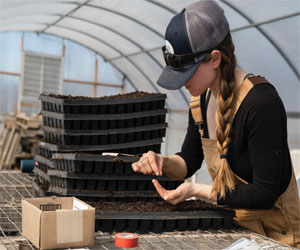 The Rise Of Greenhouse Farming
The Rise Of Greenhouse Farming
Greenhouse farming, also known as protected cultivation, has witnessed a significant surge in popularity over recent decades. This surge can be attributed to several factors, including the increasing demands for year-round crop production, the need for protection against adverse weather conditions, and the conservation of resources in a sustainable manner.
Year-Round Crop Production
One of the most notable advantages of greenhouse farming is the ability to grow crops throughout the year, regardless of the external climate. Greenhouses provide a stable and controlled environment where temperature, humidity, and light levels can be regulated to meet the specific needs of different crops. This means that farmers are not restricted to the traditional growing seasons, leading to increased crop diversity and a more reliable food supply.
Optimal Environmental Control
Greenhouses offer precise control over environmental factors. With advanced climate control systems, farmers can adjust temperature, humidity, and CO2 levels to create ideal conditions for plant growth. This level of control minimizes the impact of extreme weather events, pests, and diseases, resulting in higher crop yields and quality. It also allows for the cultivation of crops that might not thrive in local climates.
Resource Efficiency And Sustainability
Greenhouse farming is inherently resource-efficient. By retaining heat and moisture, greenhouses reduce water usage and protect against soil erosion.


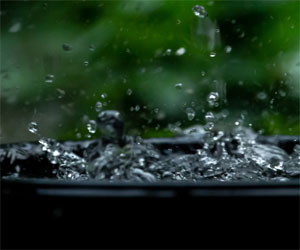
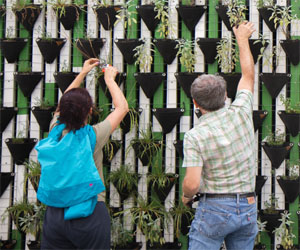
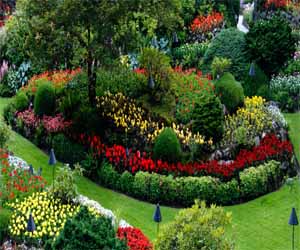
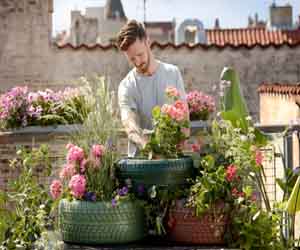
Embracing The Future Of Convenience And Efficiency
 Smart Homes: The Cornerstone Of Automated Living
Smart Homes: The Cornerstone Of Automated Living
At the heart of automated living are smart homes. Smart homes are equipped with a wide range of devices and systems that can be controlled remotely and often autonomously. These include smart thermostats, lighting systems, security cameras, and even kitchen appliances. The integration of these devices into a centralized control hub, often accessible through a smartphone or voice-activated device, allows homeowners to create a fully automated and customized living environment.
Convenience Redefined
One of the primary appeals of automated living is the enhanced convenience it offers. Imagine arriving home on a scorching summer day to find your smart thermostat has already adjusted the temperature to your preferred level. Or, picture a scenario where your home's lights gradually brighten in the morning as you wake up, and your coffee maker starts brewing your morning cup without you lifting a finger. These examples illustrate how automation can simplify daily routines and make life more enjoyable.
Energy Efficiency
Automation also plays a pivotal role in promoting energy efficiency. Smart thermostats, for instance, can learn your heating and cooling preferences and create schedules that reduce energy consumption. Smart lighting systems can automatically turn off lights in unoccupied rooms, and smart appliances can operate during off-peak hours to save on energy costs. All of these actions lead to lower utility bills and a reduced environmental footprint.
Maximize Your Space And Minimize Clutter
 3. Under-Bed Storage
3. Under-Bed Storage
Your bed can be more than just a place to sleep. Consider using the space underneath for storage. Under-bed drawers or bins are excellent for storing clothing, shoes, and other items you don't use daily.
4. Compact Kitchen Appliances
In a small kitchen, compact appliances can save valuable counter and cabinet space. Look for smaller refrigerators, slim dishwashers, and mini appliances that fit your needs without dominating your kitchen.
5. Fold-Down Tables
Fold-down tables are perfect for small dining areas or home offices. They can be easily stowed away when not in use, creating more room for everyday activities.
6. Pegboards And Hooks
Pegboards and hooks can be a game-changer for organizing and storing items like kitchen utensils, tools, or office supplies. These space-saving solutions keep your essentials within arm's reach without cluttering up drawers or countertops.
7. Magnetic Strips
In the kitchen, magnetic strips mounted on the wall can hold knives and metal spice containers, saving counter and drawer space. They're not only functional but also add a unique design element to your kitchen.
8. Over-The-Door Storage
Maximize closet and bathroom space by adding over-the-door organizers. These handy storage solutions can hold shoes, accessories, cleaning supplies, and more, making efficient use of often underutilized space.
Gardening For Wildlife
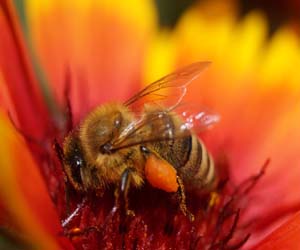 Pest Control: Many of the creatures you invite into your garden, such as birds and beneficial insects, are natural pest controllers. They help keep populations of garden-damaging insects in check.
Pest Control: Many of the creatures you invite into your garden, such as birds and beneficial insects, are natural pest controllers. They help keep populations of garden-damaging insects in check.
Pollinators: Gardens that attract pollinators like bees and butterflies ensure the successful pollination of plants, leading to bountiful harvests of fruits, vegetables, and flowers.
Education: Gardening for wildlife is an educational opportunity for children and adults alike. Observing the behavior and interactions of birds, insects, and other creatures fosters a deeper appreciation for nature.
Aesthetics: A garden designed for wildlife can be a beautiful and thriving oasis, filled with the sights and sounds of the natural world. It can be a serene and inviting place for human enjoyment.
Tips For Gardening For Wildlife:
Plant Native Species: Native plants provide food and habitat for local wildlife. Research which plants are native to your area and incorporate them into your garden.
Provide Water: Birds, insects, and other wildlife need water for drinking and bathing. Install a birdbath or a small pond to offer a water source.
Habitat Diversity: Create a variety of habitats in your garden, including meadows, woodlands, and wetland areas. Different creatures require different types of environments.
Shelter And Nesting Sites: Incorporate birdhouses, bat boxes, and bee hotels to provide shelter and nesting opportunities for various species.